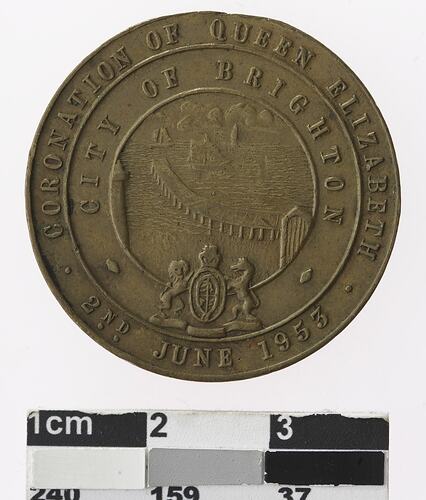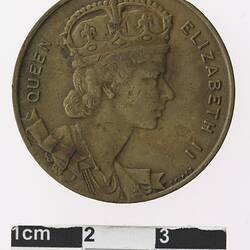Brighton is a residential bayside suburb 11 km south-east of Melbourne. It existed as a municipality from 1859 to 1994.
In 1840 the Land and Emigration Commission of the British Government approved procedures for the sale of 'Special Survey' land allotments of eight square miles (5,120 acres / 2,072 ha.) at one pound each - mainly as a revenue-raising arrangement. A 'Special Survey' in the vicinity of the future Brighton, bounded by the coastline, North Road, East Boundary Road and South Road, was sold to Henry Dendy in 1841. Henry Dendy promptly employed Jonathan Binns Were as his agent. His land was surveyed for subdivision in the spring of 1841, defined by the crescent-shaped street layout which remains today, and subdivided allotments were offered for sale. Dendy's town site was initially marketed as Waterville, but he soon renamed his land the Brighton Estate, and the site for his own home 'Brighton Park'. His timing was bad, however. A depression struck, purchasers were few, and Dendy's scheme for emigration and land sales failed. He died a pauper. The Were family acquired the land for highly profitable resale after the depression. By 1846 sales saw Brighton become the third most populated town in Port Phillip (after Melbourne and Portland). Brighton attracted wealthy residents who wanted generous building sites and the prospect of sea bathing.
By 1850 there was an Anglican church (1843), Wesleyan and Catholic churches (1848) and a Methodist church (1851). Schools were opened in the Anglican church (1849) and by the Catholic church in Centre Road (1850). Another was opened in the Wesleyan church in 1855. In 1854 Brighton had a census population of 2,731 persons. On 18 January 1859 the Brighton municipality was proclaimed extending eastwards between Dendy's survey boundaries to Thomas Street and Nepean Highway.
The railway came from Windsor to North Brighton in 1859, the connection to Melbourne in 1860 and North Brighton to Brighton Beach in 1861.
In October 1863 Brighton was made a borough, and in 1870 parts of Elwood and Elsternwick were added. The creation of the Brighton municipality brought Thomas Bent into Brighton's orbit as its rate collector in 1861. He took unfair advantage of this position and was subsequently elected to the Moorabbin Roads Board (1863), became the Parliamentary member for Brighton (1871), member of Brighton Council (1874), mayor on several occasions and a voracious developer in the area. He was the Treasurer and Premier of Victoria from 1904 to 1909. His notorious corruption escaped justice.
Brighton developed three shopping centres - Bay Street, Church Street and Nepean Highway. Away from the built-up areas Brighton comprised market gardens, famed largely for cabbages.
Between 1872 and 1893 numerous private schools were established, of which Brighton Grammar (1882) survives. Firbank Anglican girls' school was opened in 1909, and St. Leonards (Uniting Church) in 1914. A primary school opened at Middle Brighton in 1874; a primary school at Brighton Beach was opened for an orphanage in 1878 and was changed to an ordinary school in 1915.
Brighton became a Town on 18 March 1887. Brighton Town Council issued a medal in 1897 to commemorate the diamond jubilee of Queen Victoria (NU 32597). Brighton at that time had a population of 9,373 in an area of 3,288 acres. Its local economy included manufacturing, floriculture and horticulture, with tourism already a strong mainstay.
In addition to the train to Brighton Beach a tram was run from St. Kilda to Brighton in 1906. In 1919 the railway was electrified, stimulating housing development.
Brighton has been noted for its patriotism. A memorial was constructed at Green Point; the Anzac Hostel convalescent hospital was established after World War I; an Avenue of Honour was planted in the vicinity of Brighton Road; and the Brighton Patriotic Society in aid of the Red Cross, the Comforts Fund and the Air Raid Precautions Association were established.
Brighton became a City on 12 March 1919.
A technical school was opened in 1920, later becoming a secondary college.
Brighton's municipality's median house price was about twice the figure for metropolitan Melbourne. House block sizes were large, and flats fewer then other municipalities. Of its male work force, the proportion engaged in finance, property and business services was more than twice the figure for metropolitan Melbourne.
On 15 December 1994 the cities of Brighton and Sandringham, parts of the Cities of Mordialloc and Moorabbin were united to form the Bayside City Council.
References:
Blake, L. (1977). Place Names of Victoria.
Municipal Association of Victoria website http://www.mav.asn.au, accessed 17/02/2004.
Australian Places website, Monash University http://arts.monash.edu/ncas/multimedia/gazetteer/list/brighton.html, accessed 17/02/2004.
More Information
-
Keywords
-
Localities
-
Authors
-
Article types




